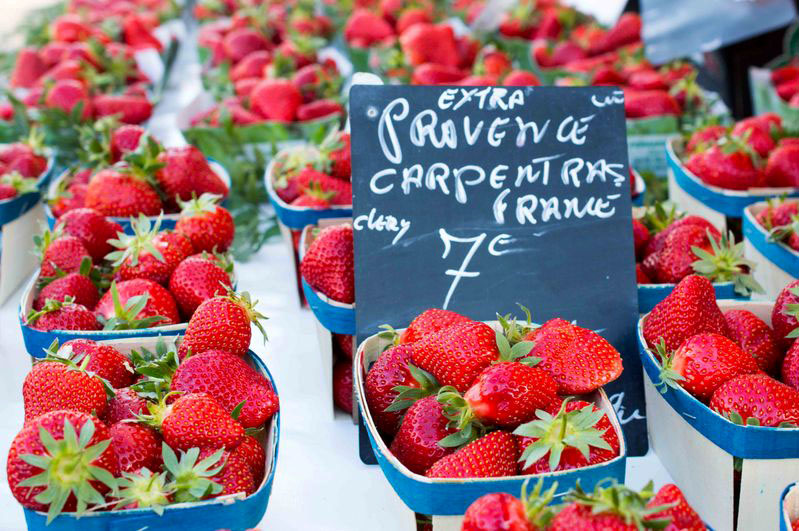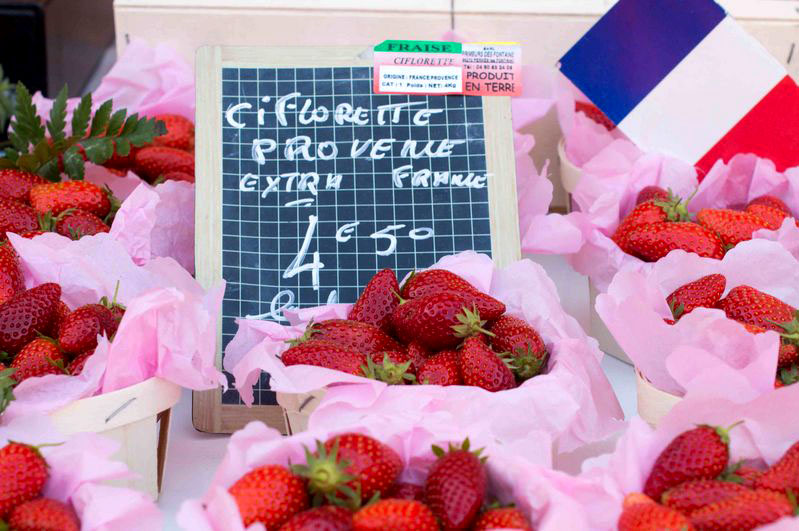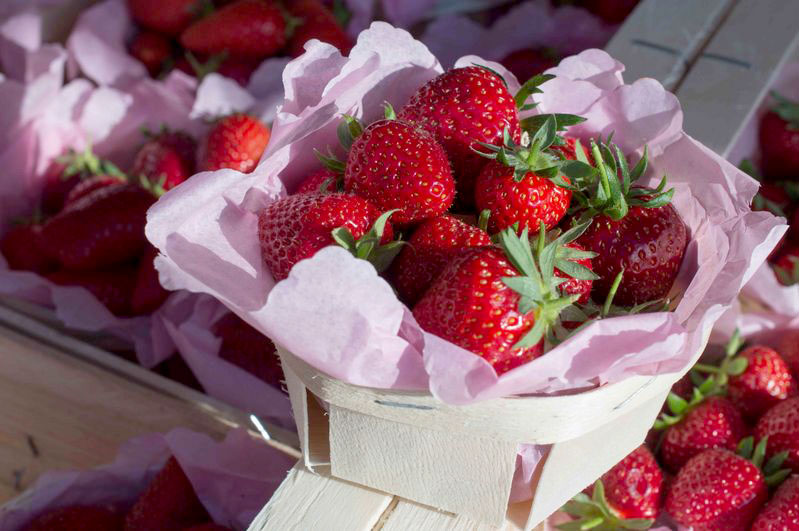French strawberries
Living in Nice, I rarely feel fruit-deprived. In summer I can choose from fragrant yellow and white peaches, figs bursting out of their skins, and melons dripping with juice, while vivid citrus fruits, from mandarins to kumquats, keep me cheerful during the winter months. May and June bring burlat and coeur de pigeon cherries, for which I have an endless appetite. It’s only in early spring that I find myself longing for something new as the clementines reach the end of their season, and this is when the first French strawberries make their tempting appearance.
By the time I spot ciflorettes, clérys and gariguettes on the stalls in late March, imposters from Spain and more recently Morocco have been on display for a couple of months. Grown on an industrial scale for appearance and transportability rather than flavor or texture, they look convincing enough but have all the strawberry-like quality of a golf ball. Though I’m tempted to jump on the French fruits as soon as they appear, I force myself to wait until at least early April, when these strawberries have begun to grow sweet.
When we tour the market for my cooking classes, visitors are often drawn to the deep red imported strawberries rather than the paler early-season French varieties. The slim gariguette and the plumper ciflorette both ripen to an orangey color, yet what they lack in redness they make up for in sweetness. Their delicate flesh means that they only keep for a day or two, but it usually only takes me a few minutes (with a little help from Sam) to work my way through a 250 g (1/2 lb) punnet. Full of vitamin C, they increase blood flow thanks to their natural nitrates and provide an instant burst of energy (or so it seems).
One of the great things about living in the south of France is that strawberry season begins early and ends late, often not until October. The summer heat means that these fragile fruits must be eaten almost immediately, so April to June are the best months to enjoy them. After the early season varieties come the ruby-red charlotte and the mara des bois, both of which have something of the floral quality of wild strawberries. Most strawberries sold as wild, or fraises des bois, are actually cultivated, and they are the most delicate of all.
Strawberries sold at the Nice food markets generally come from near the town of Carpentras in Provence, which has been famed since the late 19th century for its strawberry production, or from Carros just outside Nice. Though these strawberries far surpass the imported ones in flavor and texture, we would be kidding ourselves to think they are grown on a small scale without the aid of chemicals. As one farmer told me the other day, there is almost no such thing as an untreated strawberry; even organic farmers use the products available to them to keep pests away. Some farmers, such as Pierre and Anne Magnani at the Cours Saleya market, turn to ladybugs as a natural treatment, and whenever I can I buy from them or other conscientious producers.
Once I have found my close-to-ideal strawberries, I rarely do much to them. In my classes we prepare a strawberry and raspberry gratin, in which a vanilla custard is poured over the berries and just browned on top, so that the berries are barely warmed. We also make a classic strawberry tart with sweet butter pastry and a light crème pâtissière. I don’t usually feel the need for whipped cream with my strawberries, but if you bring meringue into the mix I’ll make an exception. When they are plentiful and a little overripe, I make strawberry vinegar or jam, using just enough sugar or acacia honey to sweeten the berries – I know it will get eaten so quickly that I don’t have to worry about storing it for a long time.






Leave a Reply
Want to join the discussion?Feel free to contribute!